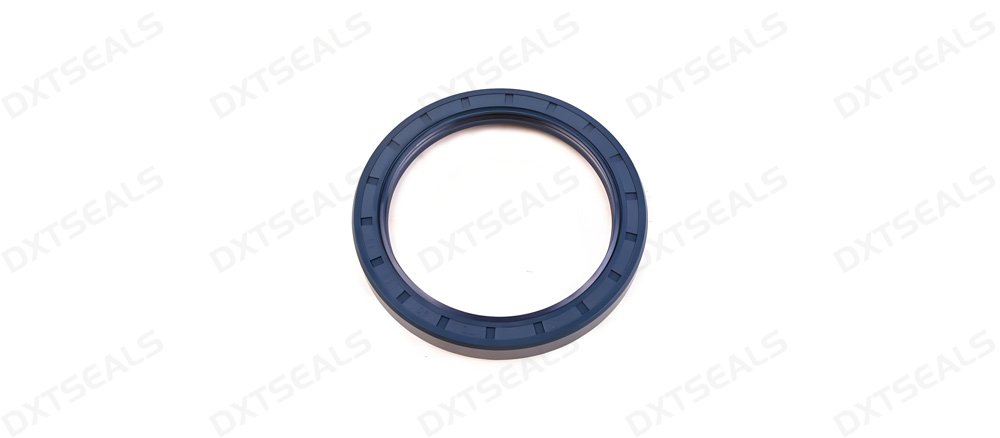
Oil seals are crucial components in sealing systems, especially in high-pressure and high-temperature environments. Choosing the right oil seal for such demanding applications is essential to ensure effective sealing, prevent leakage, and prolong the service life of your machinery. In this article, we will explore the key considerations and factors that affect the selection of oil seals for high-pressure and high-temperature applications.
1. Understanding High-Pressure and High-Temperature Environments
Before selecting an oil seal, it’s important to understand the specific challenges posed by high-pressure and high-temperature applications:
-
High-Pressure Applications: Oil seals in high-pressure environments must maintain a reliable barrier to prevent leaks and withstand significant forces. These seals must not deform or lose contact with the sealing surface under pressure.
-
High-Temperature Applications: When exposed to high temperatures, oil seals must retain their sealing properties without degrading. High-temperature seals must resist thermal expansion, ensure material integrity, and remain flexible enough to handle changes in temperature.
2. Key Factors to Consider When Selecting an Oil Seal
Selecting the right oil seal for high-pressure and high-temperature applications depends on several factors:
a) Material Selection
The material used in the construction of the oil seal plays a critical role in its performance in extreme environments. Here are the best materials for high-pressure and high-temperature applications:
-
Viton (FKM): Known for its high resistance to both high temperatures and aggressive chemicals, Viton is ideal for sealing in environments where both heat and pressure are present. It can withstand temperatures up to 250°C and is suitable for aggressive fluids.
-
PTFE (Polytetrafluoroethylene): PTFE seals offer excellent resistance to high temperatures (up to 260°C) and are highly chemically resistant. Their low friction properties also make them ideal for high-speed applications under pressure.
-
Nitrile Rubber (NBR): NBR seals are ideal for oil-based applications, offering good resistance to oils, fuels, and greases. Although their temperature tolerance is generally lower than that of Viton or PTFE, they can perform effectively in high-pressure conditions with temperatures ranging from -40°C to 120°C.
-
EPDM: EPDM seals are known for their excellent resistance to heat, ozone, and weathering. They are suitable for water, steam, and certain chemical applications, but they are not ideal for petroleum-based oils.
b) Pressure and Temperature Range
It is essential to select an oil seal material that can withstand the maximum temperature and pressure your machinery will be exposed to. Consider the following:
-
For High Pressure: Seals for high-pressure applications require materials with good compression set resistance and the ability to retain shape under pressure. Viton, PTFE, and metal-cased seals are excellent choices for this purpose.
-
For High Temperature: Viton and PTFE are the best choices for high-temperature environments. Viton seals can handle continuous temperatures up to 250°C, while PTFE seals perform well up to 260°C and are ideal for extreme conditions.
c) Shaft Speed and Friction
For high-pressure and high-temperature applications, minimizing friction is crucial to extend the service life of the oil seal and the machinery. PTFE oil seals are excellent for low friction applications, while Viton and NBR seals may be more suitable for moderate-speed environments.
d) Seal Design
The design of the oil seal is another important factor. Common seal designs for high-pressure and high-temperature applications include:
-
Spring-Loaded Seals: These seals use an internal spring to maintain constant pressure on the sealing surface, ensuring effective sealing even in fluctuating pressure conditions.
-
Metal-Cased Seals: These seals provide enhanced strength and are often used in high-pressure applications where the oil seal is exposed to external forces.
e) Chemical Compatibility
In addition to temperature and pressure, it is important to consider the chemical compatibility of the oil seal with the fluids it will be exposed to. For example:
- Viton is excellent for sealing with a wide range of chemicals and fuels.
- PTFE is resistant to nearly all chemicals but may not be as flexible as other materials.
- NBR works well with oils, fuels, and greases but is not compatible with many solvents or acids.
3. Why Choose DXTSEALS for Your Oil Seal Needs?
At DXTSEALS, we specialize in providing high-performance oil seals designed to withstand even the most challenging conditions. Our oil seals are manufactured from top-quality materials like Viton, PTFE, NBR, and more, ensuring long-lasting and reliable sealing for high-pressure and high-temperature applications.
Whether you need spring-loaded, metal-cased, or custom-designed oil seals, DXTSEALS can provide the right solution for your needs. Our team works closely with you to understand your requirements and deliver tailored sealing solutions that ensure your machinery operates at peak performance.
4. Conclusion
Choosing the right oil seal for high-pressure and high-temperature applications is essential for maintaining the efficiency and longevity of your machinery. Key factors like material selection, pressure, temperature range, and seal design play a critical role in ensuring effective sealing under extreme conditions. DXTSEALS offers a wide range of high-quality oil seals, including Viton, PTFE, and NBR, designed to meet the toughest industrial requirements.
For custom and high-performance oil seals, contact DXTSEALS today and let our expert team help you find the perfect sealing solution for your high-pressure and high-temperature applications.
